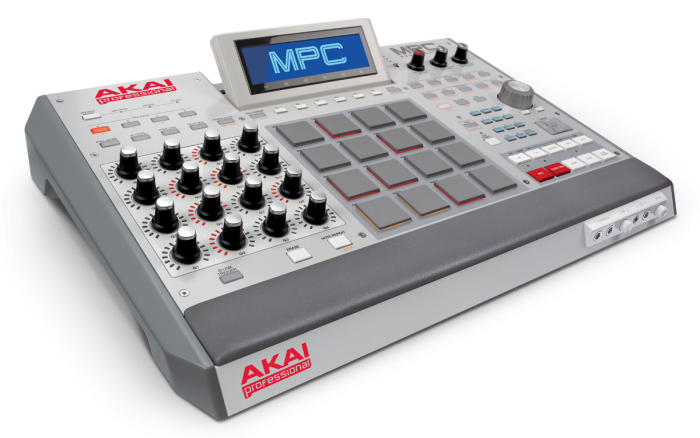

There’s multicolored backlighting that can be customized so you can quickly recognize grouped sounds and the four Q-Link knobs on the right are capacitive, meaning you can touch them to activate them, you don’t have to change a value first.

In terms of the other controls, the 16 pads work over 8 banks for a total of 128 and they have a great feel.

These smaller jacks are used to save space on the hardware, but adaptors are supplied so you can hook up external MIDI gear to the Touch as well. There’s a record volume control on the hardware for sampling, a master volume out control, headphone port and MIDI in and out 1/8 inch jacks. The rear of the unit contains audio in and out as mentioned, as well as USB which will send audio and MIDI to and from the computer. Just connect to your Mac or PC over USB (which you’ll need to do anyway) and route audio from there, either via the standalone MPC software app or running it as a plug-in inside your DAW. The software can run at up to 96 kHz and you can, of course, use a third-party interface too, if you have a higher quality one already. It actually contains a two-channel audio interface as well, for sampling in and playing sound out, though it’s locked to 44.1 kHz, at least unless this changes in an update. It needs to be PSU-powered (that screen requires more than bus power can provide) but that’s not a surprise in a serious device. The hardware unit feels very well built and is solid but portable, finished in rubberized black plastic and with a red metal base.


 0 kommentar(er)
0 kommentar(er)
